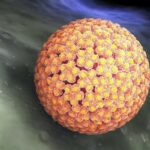
Sexual health is an important yet often overlooked component of overall wellbeing. Many people assume that any abnormal symptom or discomfort in the genital region points directly to a sexually transmitted disease (STD). However, the reality is more nuanced. Not all symptoms stem from STDs, but unusual signs could indicate an underlying issue that requires medical attention.
Getting tested and treated in a timely manner is essential for preserving sexual health. This guide clarifies the connections between symptoms and STDs while emphasizing the significance of testing. Keep reading to learn which STD signs warrant a trip to the doctor for STD screening.
Related: Confidential STD Testing Options And Treatments
Common Misconceptions
Many people mistakenly assume that any unusual symptom or irritation in the genital area is a definitive sign of an STD. However, the reality is more nuanced. Several symptoms commonly associated with STDs can also stem from other health conditions unrelated to sexual activity.
For example, while unusual vaginal discharge is often considered a telltale STD symptom, changes in vaginal discharge can occur due to hormonal fluctuations, yeast infections, bacterial vaginosis or even hygiene products. Pelvic pain and discomfort is another symptom associated with STDs like chlamydia and gonorrhea, but many other factors can cause pelvic pain as well, including cysts, digestive issues, menstrual cramps or bladder infections.
The bottom line is that one cannot accurately self-diagnose an STD based on symptoms alone. The wide range of potential causes makes it impossible to know if a symptom is due to an STD without getting tested. Assuming any genital symptom indicates an STD can lead to unnecessary anxiety and should be avoided. Only a healthcare provider can make an accurate diagnosis through proper examination and lab testing.
STD Signs And Symptoms In Males And Females
Sexually transmitted diseases (STDs) can affect people of all genders differently. Here’s a table summarizing some of the common signs and symptoms in males and females:
| STD | Symptoms in Males | Symptoms in Females |
|---|---|---|
| Chlamydia | * Discharge from the penis * Burning urination * Pain in the testicles | * Vaginal discharge * Burning urination * Pelvic pain * Pain during sex * Bleeding between periods |
| Gonorrhea | * Discharge from the penis * Burning urination * Painful or swollen testicles | * Vaginal discharge * Burning urination * Cervical pain * Bleeding between periods |
| Trichomoniasis | * Discharge from the penis * Burning urination * Itching or irritation around the penis | * Vaginal discharge (may be green, yellow, or gray) * Burning urination * Vaginal itching or irritation * Pain during sex * Foul odor |
| Herpes (HSV-1 & HSV-2) | * Sores or blisters on the penis, scrotum, thighs, or buttocks | * Sores or blisters on the vulva, vagina, cervix, buttocks, or thighs |
| HPV | * Usually no symptoms, but can cause genital warts | * Usually no symptoms, but can cause genital warts * Abnormal Pap smear (precancerous cervical cells) |
Important to know:
- This table only lists a few common STDs. There are many others.
- Many STDs don’t have symptoms, so it’s important to get tested regularly.
- The best way to prevent STDs is to use condoms correctly every time you have sex.
- If you think you have an STD, see a doctor or nurse right away. Most STDs are treatable.
Getting tested is the only way to know for sure if you have an STD. If you notice any of these symptoms, don’t hesitate to visit a clinic for a check-up. Early detection and treatment are essential for your health and well-being.
Related: STDcheck.com Review: Confidential Testing & Fast Results (2024 Update)
Signs You Should Get Tested For STDs
Experiencing any unusual symptoms in the genital area or during sex can be a sign of an STD. Here are some of the most common symptoms that indicate testing is needed:
It Hurts When You Pee
Lots of people notice something fishy (pun intended) going on down there when they pee, because it hurts. This could be a sign of a few different sexually transmitted infections (STDs). Here are the culprits to watch out for:
- Chlamydia: This sneaky STD is often called the “silent infection” because many people don’t have any symptoms. But for some, it can cause painful urination along with discharge and pelvic pain.
- Gonorrhea: This infection can cause burning, stinging, and a frequent urge to pee. Not fun!
- Trichomoniasis: This lesser-known STD is caused by a parasite and can also lead to painful urination, along with itching, burning, and discharge. You might not have heard of trichomoniasis before, but trust us, it’s a real thing!
Important! If you’re experiencing pain during urination, don’t play doctor. Head to your doctor or a sexual health clinic to get tested. It may not be an STD, but if it’s not, it’s probably still something that needs treatment (like a urinary tract infection). Early diagnosis and treatment can help you get back to worry-free peeing in no time!
It Hurts When You Have Sex
Okay, so maybe peeing isn’t painful, but sex definitely is. That could also be a sign of an STD. The same gang of culprits (chlamydia, gonorrhea, trichomoniasis) can cause discomfort during sex, along with a new player:
- Human Papillomavirus (HPV): This common STD, often known as genital warts, can cause pain during sex.
Here’s the key: Painful sex isn’t always an STD. There are other conditions like endometriosis or vulvodynia that can cause discomfort. Whatever the reason, if sex hurts, talk to your doctor. They can help you figure out what’s going on and get you back to enjoying intimacy.
Your Vaginal Discharge Is Different Than Usual
Let’s talk lady bits! Vaginal discharge is a normal part of life, kind of like your body’s built-in messaging system. It can change throughout your cycle, but sometimes it throws a curveball and gets weird. That’s when you gotta pay attention.
Here’s the thing: some STDs can mess with your discharge in a big way.
- Chlamydia and HPV: These two might cause you to have more discharge than usual. Not cool.
- Gonorrhea and Trichomoniasis: Watch out for a change in the look, feel, and smell of your discharge with these culprits. Gonorrhea can turn your discharge a funky yellow, while trichomoniasis might bring on a yellow or greenish-gray discharge that’s all frothy and smelly (think fishy!).
Bottom line: If your discharge does a complete 180 – way more of it, or a totally different color or smell – don’t ignore it. Talk to your doctor and get tested. It’s better to be safe than sorry, and getting checked out early can keep things from getting worse.
Your Vagina Is Itchy
Nobody likes an itchy vagina. It’s annoying, uncomfortable, and can definitely put a damper on things. And just like painful sex, itchiness can have a bunch of different causes, but some STDs are on the suspect list:
- The Usual Gang: Yep, chlamydia, gonorrhea, HPV, and trichomoniasis can all cause itching.
- New Nasties: But wait, there’s more! Pubic lice (also called crabs) and scabies can also cause itching down there, and you might be surprised to know they can be sexually transmitted.
The Bottom Line: Itchy vagina? Don’t suffer in silence! Talk to your doctor and get checked out. Early diagnosis and treatment can get you back to itch-free comfort.pen_sparktunesharemore_vert
Your Genital Area Is Red
Redness down below usually means irritation, and that can be caused by a bunch of things, including some STDs. But before you jump to conclusions, here’s the deal:
STDs aren’t the only culprits. Lots of things can irritate your vagina, causing redness.
But here’s the thing about scabies: This STD comes with a very specific rash. We’re talking small red bumps and blisters with thin red, brown, or gray lines. If you see this kind of redness, along with itching (because scabies is super itchy!), don’t mess around. Head straight to your doctor for treatment. Early diagnosis and treatment can get you back to itch-free, non-red comfort in no time!
You Have Warts
There’s one STD notorious for causing warts: HPV (human papillomavirus).
Now, not all HPV strains cause warts, but if you get an unlucky draw, you might find yourself with some cauliflower-shaped bumps in your genital area. Not exactly the smoothest look.
The good news? You can go to your doctor and get those warts removed. The bad news? There’s no magic cure for the HPV virus itself (yet!). But don’t stress, your body’s a fighter! In most cases, it can clear the HPV virus on its own within a few months, with most infections disappearing completely within two years.
You Have Sores
Some STDs love to leave their mark in the form of sores or blisters. Not cool! Here are two to watch out for:
- Herpes Simplex Virus: This one can cause tiny fluid-filled blisters to pop up in your genital region or even around your mouth. They burst and leave behind sore ulcers that take forever to heal (like, up to three weeks!). The good news is that these outbreaks don’t happen all the time for most people. While there’s no cure for herpes yet, there are medications to help keep those pesky blisters at bay.
- Stage I Syphilis: This sneaky STD can show up as sores in your genital area within three weeks of infection. The bad news? These sores are often painless, so you might not even notice them. But here’s the thing: early detection and treatment are key! Left untreated, syphilis can progress to much more serious health problems, including organ damage, dementia, paralysis, and even death. So, if you see any sores down there, get tested right away to rule out syphilis. It’s better to be safe than sorry!
You Have Pelvic Pain
Pelvic pain can be a real drag, but it can have a bunch of different causes. One culprit to consider, though, is a party pooper called pelvic inflammatory disease (PID).
Here’s the deal with PID: It’s basically an infection in your lady parts – your uterus, fallopian tubes, and ovaries. This nasty infection is usually caused by bacteria from a sneaky STD, like chlamydia or gonorrhea. But that’s not the only way to get PID – sometimes an unclean IUD insertion can also be to blame.
The bottom line: If your pelvis feels achy or just not quite right, don’t ignore it! Head to your doctor to get checked out. Early diagnosis and treatment can clear up any bacterial infection and get you back to feeling your best down there.
You’re Experiencing Flu-Like Symptoms
Think you have the flu? Fever, chills, headache, muscle aches, fatigue – sounds rough! But here’s the thing: these symptoms can sometimes be your body’s way of battling an STD after a sexual encounter, not the seasonal flu.
- Acute HIV Infection: This can feel a lot like the flu and shows up a couple of weeks after infection. Yuck!
- Hepatitis C: This sneaky STD can also mimic the flu, but with some bonus symptoms like itchy skin, nausea, dark pee, or even jaundice (that yellowing of your skin and eyes). Not fun!
- Pubic Lice: These little buggers can cause itching down there, and sometimes even a low-grade fever. Double not fun!
The Bottom Line: Feeling like you have the flu but also nervous about STDs? Don’t wait around! Get tested to rule them out. It’s better to be safe than sorry, and early detection and treatment can make a big difference.
How Long After Unprotected Sex To Get Tested For STD?
The amount of time you should wait to get tested for an STD after unprotected sex depends on the specific STD. Here’s a breakdown:
- Chlamydia and Gonorrhea: You can get tested as early as 14 days after unprotected sex. However, some resources recommend waiting a full 21 days for the most accurate results.
- HIV, Hepatitis B, Hepatitis C, and Syphilis: For these STDs, the recommended waiting period is at least 28 days after unprotected sex. In some cases, an even longer wait (3 months for HIV) might be advised for the most conclusive test.
Here’s why waiting is necessary:
- Incubation Period: Each STD has an incubation period, which is the time it takes for the infection to develop enough to be detectable by a test. Testing too early might miss the infection if it’s still in its early stages.
Related: Anal STDs During Pregnancy: Symptoms You Can’t Afford to Miss
STD Facts Table
| STD | Symptoms (Often No Symptoms) | Transmission | Treatment | Possible Complications (Left Untreated) |
|---|---|---|---|---|
| Chlamydia | Discharge, burning urination, pelvic pain (women) | Vaginal, anal, or oral sex with infected partner | Antibiotics | Infertility (women) |
| Gonorrhea | Burning urination, discharge, pelvic pain (women) or testicular pain (men) | Vaginal, anal, or oral sex with infected partner | Antibiotics | Infertility (women and men) |
| Herpes (HSV-1 & HSV-2) | Painful sores or blisters on genitals, mouth, or rectum | Skin-to-skin contact with infected area, including oral sex | Antiviral medications (shorten outbreaks, not a cure) | Incurable, manageable with medication |
| HPV | None (genital warts possible) | Skin-to-skin contact with infected genitals or skin | No treatment for virus, treatments for warts | Cervical cancer and some other cancers |
| HIV | Fatigue, weight loss, fever (later stages) | Bodily fluids (blood, semen, vaginal fluids, breast milk) of infected person | Antiretroviral therapy (ART) | Incurable, manageable with medication |
| Syphilis | Stages with different symptoms (starts with sore) | Skin-to-skin contact with infected sores | Antibiotics | Serious health problems, death |
Remember: This table is just a glimpse into the world of STDs. Getting tested is the only surefire way to know your status. So, if you see any of these symptoms, don’t panic, just get yourself to a clinic for a check-up. Early detection and treatment are your best weapons in the fight against STDs!
Safe Sex Practices
Practicing safe sex is crucial for reducing the risk of contracting STDs. Here are some key safe sex practices to keep in mind:
- Using protection properly – Using condoms, dental dams or other barriers consistently and correctly helps lower the risk of transmitting STDs through sexual contact. Always check the expiration date, store condoms properly, and use a new one with each sex act.
- Getting tested regularly – Routine STD screening allows for early detection and treatment. The CDC recommends annual chlamydia and gonorrhea screening for sexually active women under 25 and men who have sex with men. Those with multiple partners may need more frequent testing.
- Talking with partners – Have open and honest conversations with sexual partners about STD status and testing history. Both partners should get tested before unprotected sex. Disclose any STDs and notify partners about potential exposure.
- Limiting partners – The more partners someone has, the higher their STD risk. Practicing monogamy or limiting partners reduces exposure.
- Avoiding contact with sores/fluids – Preventing skin-to-skin contact with sores or body fluids from a partner reduces the chance of infections like herpes or HIV.
- Getting vaccinated – Vaccines exist that provide protection against hepatitis B and HPV, which are major causes of cancer and liver disease.
Following safe sex guidelines consistently gives the best protection against STDs. However, mistakes happen. That’s why getting regularly tested is so important, even for those in monogamous relationships.
Conclusion
Let’s face it, STDs happen. Even with the best safe sex practices, they can pop up like uninvited guests at a party. But hey, no shame in their game! The key is to recognize the signs so you can get the boot on them fast. Whether it’s a complete eviction (cure) or just showing them the door (managing symptoms), early detection is your superpower.
Frequently Asked Questions (FAQs)
Who should get tested for STDs?
Anyone who is sexually active should get tested regularly for STDs, even if they are asymptomatic or monogamous. Some groups that should prioritize testing include sexually active teens and young adults, pregnant people, those with new sexual partners, and those with multiple partners.
How often should I get tested?
The CDC recommends getting tested at least once a year if you are sexually active. Some experts suggest testing every 3-6 months if you have multiple partners. Pregnant people should get tested in their first and third trimesters.
At what age should I start getting tested?
It’s recommended to start STD testing when you become sexually active. Many experts suggest STD screening starting at age 13-15. Some STDs are also routinely tested for at annual wellness visits starting at age 13-15.
What does STD testing involve?
STD testing typically involves a urine sample, blood draw, or vaginal/cervical swabs. Some tests use saliva or fluid from sores. Your doctor will collect a sample and send it to a lab for analysis. Results are usually available within a few days to a week.
Will testing be painful or uncomfortable?
Most STD tests do not cause significant pain or discomfort. Urine tests and blood draws are quick and minimal. Swab tests can cause light pressure or scraping at the swab site. Discuss any concerns with your doctor ahead of time.
Can I get anonymous STD testing?
Yes, many public health clinics and independent labs offer confidential STD testing where results are not linked to your medical records. However, it’s best to have the results sent to your doctor for proper counseling and treatment.






